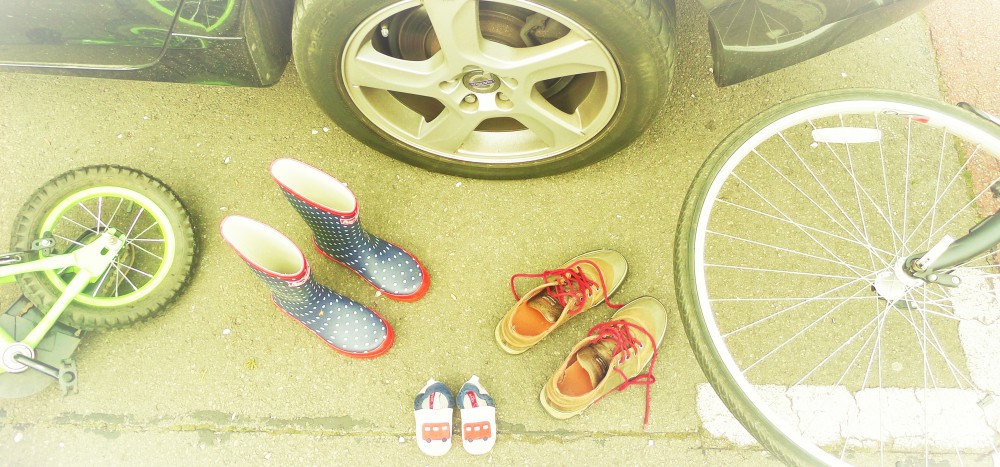Hooray! Hooray! We’re on our way! Our summer vacation starts today!
- The Bears’ Vacation, Stan and Jan Berenstain, 1968
One hot day Lucy and Tom and their mum and dad thought they would go to the seaside.
- Lucy and Tom at the Seaside, Shirley Hughes, 1976
It’s that time of year. School’s out. Time to go the beach, the countryside, camping, climbing, canoeing, barbecuing, being outdoors. Hopefully, the sky and the forecast both promise sun and heat.
Two families, living thousands of miles apart, are packing for a summer’s day out.
Mom, Pop, Billy and Emily Johnson, off Main Street, USA, each have a backpack with their bathing suits, towels and baseball caps.
Mum, Dad, Will and Emma Jones, near the High Street, UK, each have a rucksack with their swimming costumes, towels and sun hats.
The Johnson family pack their picnic. Fruit punch and peanut butter and jelly sandwiches, watermelon and cookies.
The Jones family pack their picnic. Squash and cheese and pickle sandwiches, grapes and biscuits.
Both families bring sunscreen and some beach toys, but the Johnson family also pack their folding garden chairs into the back of their family hatchback. “Have we got everything?” asks Mom Johnson. “If there’s anything else, throw it in the car now,” says Pop Johnson, “I don’t want to have to turn back when we’re almost there and stuck in the beach traffic.”
With these words, Pop turns the key in the ignition.
The Jones’ family will sit on their towels. Or perhaps rent the public beach chairs available. “We have to pack light, because we’re taking the train,” says Mum Jones. “And I know I’ll end up carrying everything!” adds Dad Jones.
With these words, the Jones family set out on the first leg of their journey – walking to the station.
***
These two stories have many little differences. It’s fun to highlight the contrasts between the country where I grew up and the one I now call home. The biggest difference here is how the two families travel to their respective days out, which is also reflected in the two summer holiday children’s stories in my daughter’s library, quoted above. Car versus public transport.
Naturally, this is a generalisation. There are places in the United States where people use public transport to get to the beach, and there are plenty of days out in the UK that are only accessible by car. People choose which way to go based on where they live, where they’re going, who’s going with them and what they need to take. Culture and expectation are minor factors compared to practicalities.
Indeed, my family now often drives for a day out if we’re not going into London or another urban centre. We’re more likely to leave the car at home for every day journeys than occasional ones. However, we have the choice to go by public transport, or even mixed transport like Park and Ride, despite not living in a large urban area.
If we were in the States our situation would be much less common. I grew up in an American town of 75,000 people without a train station. Decent bus services to Boston, the nearest large city, didn’t exist in my childhood. Yet my home town was only an hour’s drive from the seaside, spring-fed lakes, climbable mountains of over 3000 feet, virgin forests and Boston too. So drive we did.
My younger self would have assumed that any story about a train ride to the seaside must have taken place at least two generations earlier or in a different country. Or both. My present self realises that such trips may be foreign to many Americans, but they aren’t that odd.
And it turns out that no matter the form of transport, the country or the destination for that summer’s day out, the kids are still asking the same question with the same frequency designed to annoy parents the world over:
“Are we there yet?”
